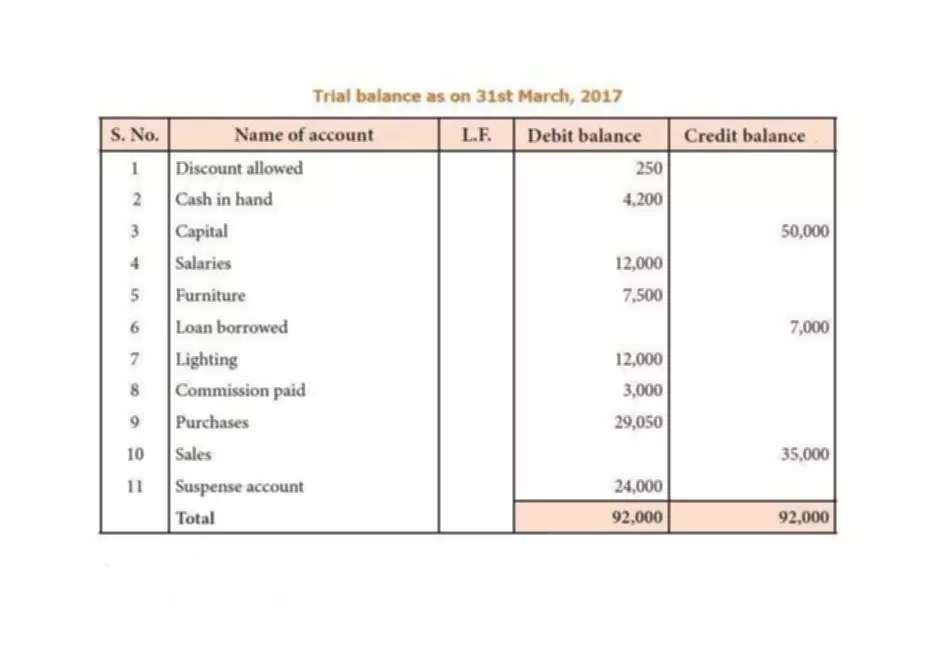
Debt ratio Wikipedia
Content
Therefore, we can say that 41.67% of the total assets of ABC Ltd are being funded by debt. Let us take the example of a company called ABC Ltd, which is an automotive repair shop in Brazil. The company has been sanctioned a loan to build a new https://www.bookstime.com/articles/negative-retained-earnings facility as part of its current expansion plan. Currently, ABC Ltd has $80 million in non-current assets, $40 million in current assets, $35 million in short-term debt, $15 million in long-term debt, and $70 million in stockholders’ equity.
Is a higher debt to asset ratio better?
For creditors, a lower debt-to-asset ratio is preferred as it means shareholders have contributed a large portion of the funds to the business, and thus creditors are more likely to be paid.
As you can see, Ted’s DTA is .5 because he has twice as many assets as liabilities. Ted’s bank would take this into consideration during his loan application process. All else being equal, the lower the debt ratio, the more likely the company will continue operating and remain solvent.
Is a Low Total-Debt-to-Total-Asset Ratio Good?
Debt servicing payments must be made under all circumstances, otherwise, the company would breach its debt covenants and run the risk of being forced into bankruptcy by creditors. While other liabilities such as accounts payable and long-term leases can be negotiated to some extent, there is very little “wiggle room” with debt covenants. Perhaps 46.5% isn’t so bad after all when you consider that the industry average was about 75% in 2022. The result is that Starbucks has an easy time borrowing money—creditors trust that it is in a solid financial position and can be expected to pay them back in full. Financial data providers calculate it using only long-term and short-term debt (including current portions of long-term debt), excluding liabilities such as accounts payable, negative goodwill, and others. The debt to asset ratio has also particular limitations and investors should be aware of that.
The debt-to-total-assets ratio is a popular measure that looks at how much a company owes in relation to its assets. The results of this measure are looked at by creditors and investors who want to know how financially stable a company can be. The total-debt-to-total-assets formula is the quotient of total debt divided by total assets. As shown below, total debt includes both short-term and long-term liabilities.
Debt-to-Total-Assets Ratio Definition
A low total-debt-to-total-asset ratio isn’t necessarily good or bad. It simply means that the company has decided to prioritize raising money by issuing stock to investors instead of taking out loans at a bank. While a lower calculation means a company avoids paying as much interest, it also means owners retain less residual profits because shareholders may be entitled to a portion of the company’s earnings. A ratio below 0.5, meanwhile, indicates that a greater portion of a company’s assets is funded by equity. This often gives a company more flexibility, as companies can increase, decrease, pause, or cancel future dividend plans to shareholders. Alternatively, once locked into debt obligations, a company is often legally bound to that agreement.

It helps in evaluating the financial risk of the business because investors can use this metric to assess the loan taken by the business and accordingly make investment decisions. A company that has a total debt of $20 million out of $100 million total assets has a ratio debt to asset ratio of 0.2. In the above-noted example, 57.9% of the company’s assets are financed by funded debt. Analysts will want to compare figures period over period (to assess the ratio over time), or against industry peers and/or a benchmark (to measure its relative performance).
Long Term Debt to Total Assets Calculator
A high debt-to-assets ratio could mean that your company will have trouble borrowing more money, or that it may borrow money only at a higher interest rate than if the ratio were lower. Highly leveraged companies may be putting themselves at risk of insolvency or bankruptcy depending upon the type of company and industry. For example, in the example above, Hertz is reporting $2.9 billion of intangible assets, $611 million of PPE, and $1.04 billion of goodwill as part of its total $20.9 billion of assets. Therefore, the company has more debt on its books than all of its current assets. Should all of its debts be called immediately by lenders, the company would be unable to pay all its debt, even if the total-debt-to-total-assets ratio indicates it might be able to.
- A debt-to-equity ratio of 1.5 would indicate that the company in question has $1.50 of debt for every $1 of equity.
- Hence, it is considered a risky investment, and the banker might reject the loan request of such an entity.
- Basically it illustrates how a company has grown and acquired its assets over time.
- Another issue is the use of different accounting practices by different businesses in an industry.
Naturally, creditors will be more sceptical to lend funds to these company and not many investors will buy their stocks. Companies that wish to attract more capital sources need to have decent risk management. The organization can rely heavily on sales and revenue growth without rising related expenses. This increase in sales may lower the debt proportion and improve the debt-to-total assets ratio.
Long Term Debt to Total Asset Ratio Explanation
For example, pipeline companies usually have a higher debt to asset ratio than technology companies since pipeline companies have comparably more stable cash flows. Because of this, it’s a good idea to only compare companies within the same industry. This formula is one of many leverage ratios often used by investors and creditors. However, if creditors and investors don’t take any of these ratios into account, they wouldn’t know if a company can pay off its debts in time. They might be caught off guard if the company was suddenly approaching bankruptcy.

The debt-to-asset ratio represents the percentage of total debt financing the firm uses as compared to the percentage of the firm’s total assets. It helps you see how much of your company assets were financed using debt financing. An ideal debt to asset ratio explains the part of the capital structure of the company that has been financed through the loan. Therefore, it shows the interest obligations of the business in bonds and loans.
Companies can generate investor interest to obtain capital, produce profits to acquire its own assets, or take on debt. From the calculated ratios above, Company B appears to be the least risky considering it has the lowest ratio of the three. For example, in the numerator of the equation, all of the firms in the industry must use either total debt or long-term debt. You can’t have some firms using total debt and other firms using just long-term debt or your data will be corrupted and you will get no helpful data. The ideal debt to asset ratio calculation involves some steps as given below. Total assets may include both current and non-current assets, or certain assets only depending on the discretion of the analyst.
The debt to asset ratio indicates how much a company is leveraged and how likely it is to be able to repay its debts in the future. Both investors and creditors use this figure to make decisions about the company. This tells you that 40.7% of your firm is financed by debt financing and 59.3% of your firm’s assets are financed by your investors or by equity financing.
